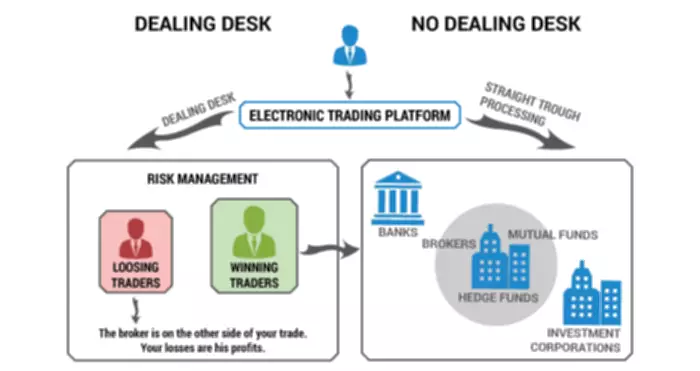Every Thing You Need To Learn About Liquidity Supplier Tokens
Liquidity Providers (LPs) are investors who present crypto assets to the liquidity swimming pools and in flip profit from the rewards earned. Additionally, the liquidity supplier will get a new token called LP tokens after they provide liquidity to the market maker’s platform. These tokens are proportionally distributed depending on how much the liquidity suppliers have contributed to the trading pairs. LP token holders can also participate in yield farming by staking their LP tokens and making passive earnings. The answer to how LP tokens work would focus on the event liquidity provider meaning of easily convertible belongings in AMM-based protocols as LP tokens.
What Are Liquidity Supplier (lp) Tokens And How Do They Work?
Start studying more about the mechanics of the DeFi ecosystem and become an skilled in DeFi. The overview of liquidity suppliers and what they do supply a viable foundation for understanding the fundamentals of LP tokens. Now, it is important to have a look at how liquidity provider tokens work to reinforce liquidity in the DeFi ecosystem. Liquidity is likely one of the core concepts within the DeFi ecosystem and defines the flexibleness of changing an asset into one other asset without affecting its value.
How Liquidity Is Added To Decentralized Exchanges?
Do not hesitate to take a look at our crypto market making web page or attain out to us directly by filling out our contact form! This collaborative method aligns with the decentralized nature of those platforms and permits a broader community-driven contribution to market depth. Experienced yield farmers often use specialised tools and software to track and manage their positions throughout different protocols.
What Is The Position Of Liquidity Supplier Tokens
Providing liquidity also can include potential risks, corresponding to impermanent loss, which may influence the overall profitability. In different words, for offering 0.1% of the whole liquidity in a Liquidity Pool, you’ll be issued 0.1% of the total LP tokens in circulation. You can simply see that your possession share of LP tokens corresponds on to your ownership share of the liquidity. Uniswap and Sushiswap, for instance, both operate on high of the Ethereum community and issue LP tokens as ERC20 tokens.
The Role Of Crypto Liquidity Swimming Pools In Defi

Within DeFi, Liquidity Provider tokens remedy the problem of locked crypto liquidity. That means, earlier than LP tokens had been launched, crypto assets had been locked or staked for sure mechanisms (including governance) and otherwise remained inaccessible during that point interval. In a commerce, merchants or buyers can encounter a distinction between the anticipated value and the executed worth. The liquidity pool aims to remove the issues of illiquid markets by giving incentives to its users and providing liquidity for a share of trading charges. For instance, if you contribute $10 USD price of property to a Balancer pool that has a complete worth of $100, you’d receive 10% of that pool’s LP tokens.

In conventional finance, liquidity is supplied by consumers and sellers of an asset. A decentralized exchange (DEX) without liquidity is equal to a plant without water. Liquidity swimming pools allow users to buy and sell crypto on decentralized exchanges and different DeFi platforms without the need for centralized market makers. In summary, liquidity pools are central to how DEXs operate but these depend on liquidity providers to be successful. They do present opportunities for passive earnings but also come with some risks, which you need to at all times keep in mind when considering whether or not to turn into a liquidity supplier. Uniswap is doubtless considered one of the oldest DEXs round, and one of many first to distribute its own governance token.
Ninja Promo’s market-making service offers a risk-based approach to launching your projects in market exchanges. Empirica was established in 2010 as a trading software program firm and later advanced into a crypto liquidity supplier utilizing its personal proprietary software program. It can be the market maker answerable for the execution of 20-30% of its designated exchanges’ every day quantity. Meanwhile, a crypto liquidity supplier acts as a mediator between brokers and market makers. For instance, the PoS or Proof of Stake mechanism in ETH 2.zero would name for users to stake ETH for validation and the addition of latest blocks to the Ethereum blockchain.
- As mentioned above, a typical liquidity pool motivates and rewards its customers for staking their digital belongings in a pool.
- Platforms like Uniswap have popularized this concept, utilizing advanced algorithms to set prices after which execute trades rapidly and mechanically.
- On prime of it, AMM could present totally different perspectives on approaches to crypto buying and selling generally.
- When a liquidity supplier wants their liquidity again, they want to burn their LP tokens to obtain their unique crypto assets, in addition to any accumulated commissions from trading fees or mortgage curiosity.
It is the manner in which property are transformed to cash rapidly and efficiently, avoiding drastic worth swings. You might also face slippage, which is the distinction within the worth you wished to promote an asset for vs. the price it really bought for. Bancor’s newest model, Bancor v2.1, provides a number of key options to liquidity suppliers (LPs), together with single-sided publicity and impermanent loss safety.

This can occur through impermanent loss, price slippage, or if the smart contract is exploited by malicious actors. Awareness of those risks and cautious consideration of strategies to mitigate them is essential for anyone partaking with decentralized exchanges and liquidity pools. To create a greater trading expertise, varied protocols offer much more incentives for users to provide liquidity by offering extra tokens for particular “incentivized” swimming pools. Participating in these incentivized liquidity pools as a supplier to get the maximum quantity of LP tokens known as liquidity mining. Liquidity mining is how crypto trade liquidity suppliers can optimize their LP token earnings on a selected market or platform.
You receive 10% of the LP tokens since you personal 10% of the crypto liquidity pool. Holding these LP tokens permits you whole control over when you withdraw your share of the pool with out interference from anybody — even the Balancer platform. And since LP tokens are ERC-20 tokens, they are often transferred, exchanged, and even staked on different protocols. Automated market maker (AMM) platforms like Uniswap, Curve, and Balancer are a central facet of the fast-growing decentralized finance (DeFi) ecosystem, and present a novel method to trading generally. A key function of automated market maker platforms is the liquidity provider (LP) token. LP tokens permit AMMs to be non-custodial, meaning they do not maintain on to your tokens, however as an alternative function via automated functions that promote decentralization and equity.
LP tokens help remedy the problem of restricted crypto liquidity by opening up an indirect form of staking, one the place you prove you personal tokens as an alternative of staking the tokens themselves. Some DEXs have a farming function, which simply includes staking LP tokens to earn even more rewards. This encourages liquidity providers to ensure their liquidity is locked for longer in the swimming pools. When staking LP tokens, you’re usually given extra tokens – typically in the type of native DEX tokens. For instance, should you stake LP tokens in PancakeSwap, the DEX rewards you with its personal CAKE tokens, which you may be able to promote and even additional stake for extra revenue.
Ultimately, liquidity suppliers are the cornerstone of DEX operations, supplying cryptocurrencies for communal use and facilitating a decentralized buying and selling environment. Their function is essential in sustaining a vibrant and practical market inside the dynamic sphere of decentralized finance. When Curve launched it grew shortly by securing the underdeveloped stablecoin market.

Read more about https://www.xcritical.in/ here.
